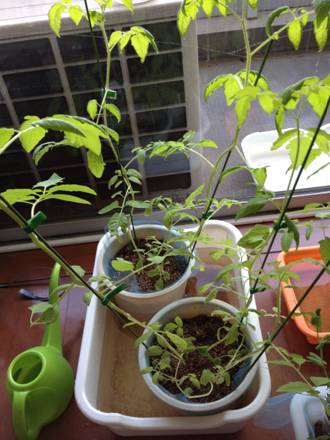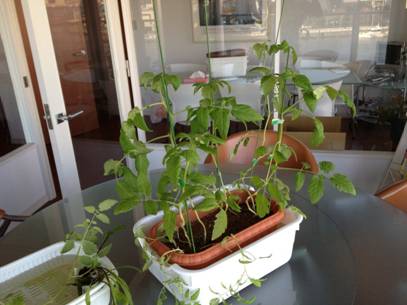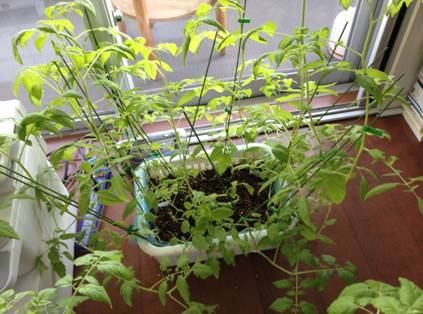I don’t think you will have any problems if you skip the last procedure. At this stage you need seedling pots, trays to house the pots, mesh net, Vermiculite, and liquid fertilizer.
For seedling pots, I recommend those with small holes in the bottom and good water penetration. For the liquid fertilizer, I used Hyponica.
I spread the mesh net inside the seedling pot. I filled the pot with Vermiculite one to two centimeters high. I then put some seedlings with tea filter bags into the pot and covered the pot with Vermiculite. When the pot was filled with Vermiculite, I poured in some water to even out the contents of the pot. At this point, if the pot is not filled, add Vermiculite.

This time, I put four or five seedlings in a pot. However, if you grow the plant at home, I recommend you put one to two seedlings in each pot. Four or five seedlings in one pot can grow well, but as they grow their leaves and branches get tangled, growing so many seedlings under such limited conditions as an indoor setting seems inadequate. It’s also hard to put so many poles in one pot.
As you see in the above picture, some seedlings are put into pots, which are housed in a tray. I used a large tray to house two pots. Then I poured in water with an appropriate amount of liquid fertilizer. I used enough water to keep the bottom part of the roots soaked. At this stage the seedlings absorb the water much more than before so adjust the amount of water according to the growth.

When I transplanted the seedlings, I used a commonly-used planter instead of seedling pots.
Like using plastic pots, I spread mesh net in the planter, then put Vermiculite one to two centimeters high, on which I placed seedlings, and I filled the planter with Vermiculite.

The part of the experiment is an aggressive transplanting setting. I put as many seedlings as possible into a large sieve basket to observe how well they would grow. Nourishment conditions were the same as the other two settings – exposure to the sunlight and watering with liquid fertilizer.
From here on, you don’t need to exert any particular effort beyond maintaining appropriate water levels and substituting longer poles as needed to guide the growth of your cherry tomatoes. When winter arrived, I was concerned whether the tomatoes would be able to survive the cold. Although all were grown indoors, there were differences in growth between those in the well-heated room and those in the unheated one. I will show the differences between these cherry tomatoes grown during winter in the next article.
